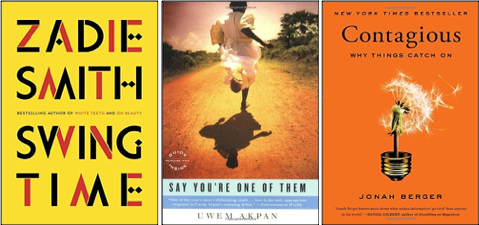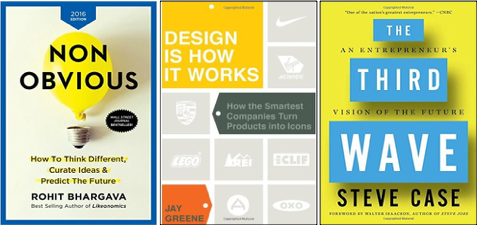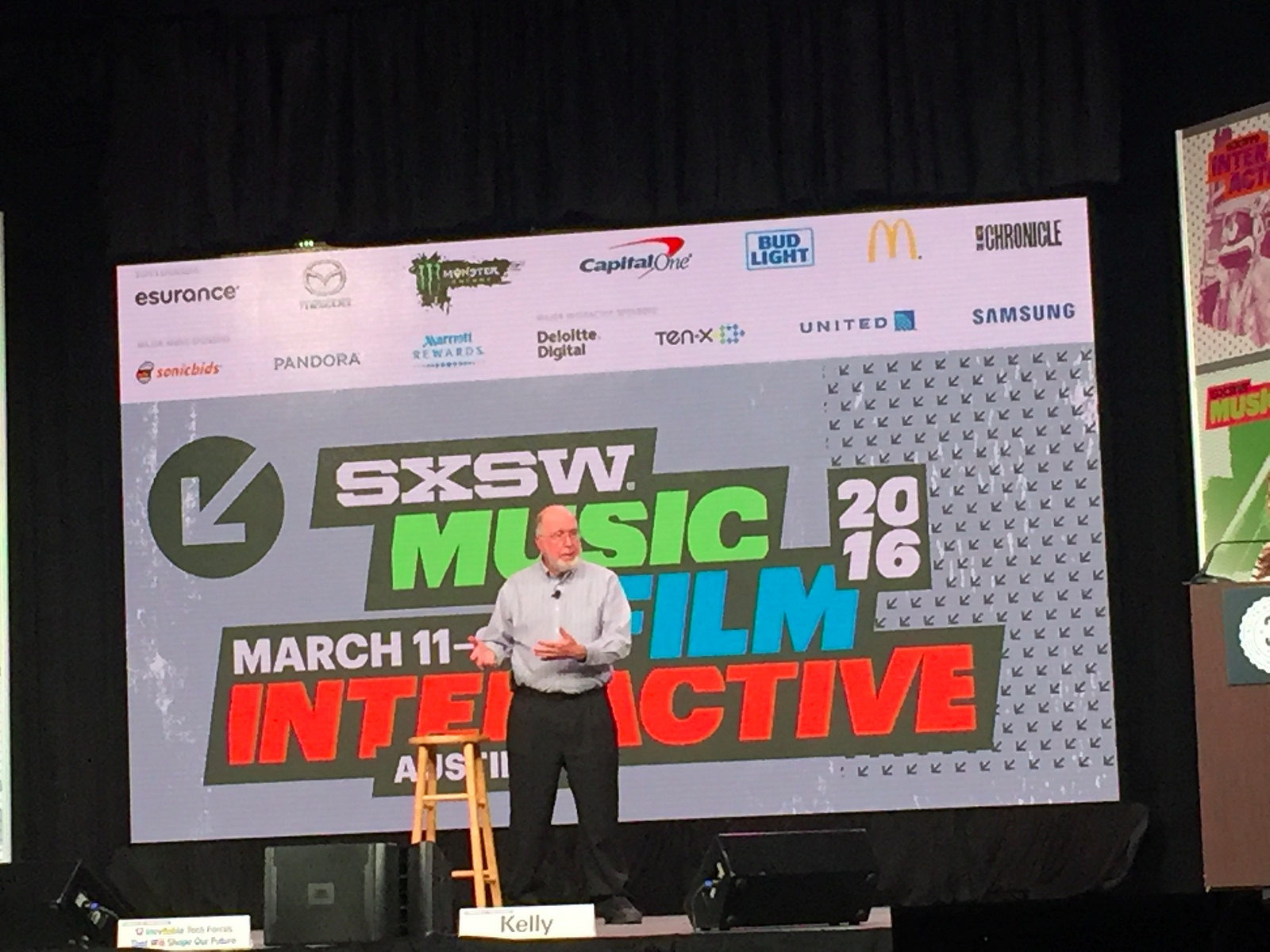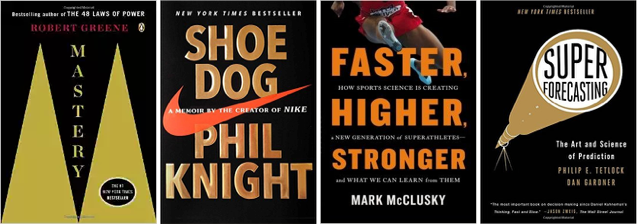I Read 40 Books In A Year, Here’s What I Learned

In 2016 I discovered the library by our new home. It’s been amazing! I’ve been able to avoid buying books while being able to read them. Finding the library coincided with a lot of travel across the world. Throw on top of that a lot of time assisting startups, VestedWorld’s world-changing portfolio, and it’s made for a year filled with learning to do 3 things I love; improving company operations, reading and writing (culminating in Linkedin selecting me as a Top Voice for Technology and my publishing a book I hope you buy here on Amazon!!).
Why 40 books? I turned 40 this year and reading these books was my mid-life crisis :).
1. Forget Data. Everything is tied to understanding consumers and their emotions. Everything.
Marketing: While we all yearn for virality with our products or ideas, it most likely won’t happen. What we can all do is take a more structured approach to spreading our ideas. This is what Jonah Berger offers in ‘Contagious.’ He offers an approach to virality by triggering emotions of anger or goodwill. I used this to great effect in a few of my blog posts this year (including ‘How Elon Musk might be screwing this up’ which generated 10’s of thousands of views and vitriolic responses from Musketeers).
You can also trigger emotions by finding a bogeyman that rallies your audience, team or customers. A bogeyman stirs up emotions that provoke action. For Phil Knight, it was Grelle (a classmate runner who always bested Knight) and Adidas when he ran Nike. For Elon Musk it is the incumbent utilities. For Edward Tufte, it was bad design. The bogeyman triggers emotions and drives you.
Also, read ‘22 Immutable Laws of Marketing’ by Al Ries & Jack Trout and ‘Traction’ by Weinberg and Mares to add some additional marketing knowledge to your arsenal.

2. You don’t know your customer until you know their stories.
Marketing: I read fiction books almost as much as I read non-fiction. The best fiction books do an excellent job of character mining; it’s how they get us to feel what the character feels and live the journey of the protagonists. My character mining fixes this year came from reading ‘Say You’re One of Them’ Uwem Akpan and ‘Swing Time’ by Zadie Smith. When you truly understand people (your customers) you empathize at a level that allows you to tell their stories (and truly meet their needs). To learn how to tell stories, I also read ‘Writing Fiction for Dummies’ by Ingermanson and Economy. I found the next layer of understanding, communicating with people, in the most unlikely of places by reading ‘30 Million Words’ by Dana Suskind, which is all about building a child’s brain through conversation. It provides a structure for how we ensure, even as adults, that we listen more than we speak through asking the right questions. We all need that.
I also reread ‘And Then There Were None’ by Agatha Christie, one of the best well-written novels ever. And millions of people agree. Without giving away the plot, for fear of the ire of the few who haven’t read this, the business lesson here is that the combination of a well laid out plan based on a strategy that understands the very nature of people is plain murderous. I threw in ‘Tribes’ by Seth Godin. What’s a year of reading about marketing without a Seth Godin book? I chose to go with an oldie but a goodie.
3. The design is still how it works. Whether you intentionally designed it or not, you’ve designed it.
Design: Edward Tufte is a legend in the world of visual information display and the folk at Duarte, who created Slidedocs, are his esteemed students. ‘Resonate’ by Nancy Duarte is, unsurprisingly, a well laid out book that provides a new way to think about slides and presentations. I’m not a designer (far from it), but between this book and Edward Tufte’s ‘Visual Display of Quantitative Information’ I created Utility Digest, a breathe of fresh air in a staid industry. Looking at things differently and conveying the information differently and simply makes it more accessible to a wider audience. Something that my industry, the utility industry, sorely needs.
I also read a few books on design including ‘Design Is How It Works’ by Jay Greene, ‘Design: The Definitive Visual History’ (which you actually browse), ‘Change by Design’ by Tim Brown and the ‘Little Black Book of Design’ by Adam Judge as there is a convergence between design thinking and the utility industry that I need to get familiar with.

4. If You Still Choose To Pay Attention To Data, Focus on Small Data.
Trends: What Rohit Bhargava does in ‘Non-Obvious 2016’ I like to call future casting; it’s like weather forecasting but for future business trends. In the 2016 edition of his recurring series of books, Bhargava correctly predicts a few trends that came to define 2016. My favorites were Small Data and Engineered Addiction. The book speaks to always have an eye for where your industry is going so that you can discover the business opportunities inherent. But the trends start on the fringes.
Diving into fringe analysis meant reading ‘Small Data’ by Martin Lindstrom. In a world beset with big data Lindstrom suggests that we can draw great business insights from truly understanding what makes the individual tick. Using examples from his travels across the world, he describes the simple but meticulous work of consumer research that yields the valuable insights.
I dug deeper into future casting by reading ‘Superforecasting’ by Philip Tetlock and Dan Gardner and honed in on the art of seeing more and seeing better in ‘Visual Intelligence’ by Amy Herman.
5. Death By A Thousand Cuts Is A Lot Less Painful. But No Less Deadly.
Innovation: The utility industry is changing (here, here and here). In ‘The Grid’ Gretchen Bakke, an anthropologist, lays out the history, the current shaky state and the possibilities for both sustainable and highly profitable businesses to change the landscape of the utility industry. I reread ‘Understanding Today’s Electricity Market’ by Shiverley & Ferrare(several times) because, as they say, to disrupt you have to understand deeply. Also read ‘The Colors of Energy’ by Kramer, a compilation of essays by industry experts, to learn more. I also read ‘How Google Works’ by Eric Schmidt, a primer on a culture of innovation.
6. What Technology Wants is Inevitable, and Then It Proceeds to Standardize Our Experiences. For Good. And Bad.

Trends: I saw Kevin Kelly Keynote at SXSW in 2016 and pre-ordered his book right after the talk. A few months later it was a pleasant surprise when ‘The Inevitable’ came in the mail. The Inevitable provides a frame with which to assess the advancement of technology, positive and negative. Kevin Kelly suggests that one of the tasks that our technology platforms will capture value from doing will be to filter on our behalf. What happens when the technology, as we saw over the last few months of politics, filters news because it thinks it isn’t valuable to you, but it should be?
To take the thinking around technology, and the changing landscape of business, a few steps further read Steve Case’s ‘The Third Wave,’ ‘ The Master Algorithm’ by Pedro Domingos, ‘The Shift’ by Lynda Gratton, and ‘Big Bang Disruption’ by Larry Downes and Paul Nunes.
7. Mastery Is Not A Destination. It’s A Journey.
Self-Improvement: About halfway into ‘Mastery’ by Robert Greene I decided what I would get better at this year, the thing I had already put my 10000 hours into, was writing. Suffice to say; I’ve gone from a few hundred views of my blog posts to a few hundred thousand views and shares in just one year. I’m far from mastery (my sentences still run on), but I’m learning and improving and taking as much from the journey. But I also learned that the 10,000 hours concept is now misleading folk. It’s not a destination. It’s just a point along the journey. This book I paired with great career advice piece from Scott Adams of Dilbert Fame.
I put ‘The Excellence Habit’ by Vlad Zachary on this list less because of the quality of the book but more because of the message and how the attainment of mastery is tied to habit. It’s not based on any scientific evidence, but Zachary suggests that excellence can be developed a habit and consequently success comes from that. I can buy that; I just wished it had been more, for lack of a better word, thorough. I also read ‘Faster, Higher, Stronger’ by Mark McClusky.
8. Doing The Work Will Always Be How You Find Out If IT Works.

Operations: ‘Sprint’ by Jake Knapp, ‘Bend The Curve’ by Andrew Razeghi, ‘Venture Deals’ by Brad Feld and Jason Mendelsohn were all helpful in the practical work of helping a lot of founders get through the hard times of building their businesses this year. The true value of these books was in the actual bringing to life of the words on the pages of these books and through implementation experiencing the joy of turning around a business or feeling the pain of a founder as she shuts down her venture. It all still boils down to doing the work.
9. Sometimes The Mess Wins. Embrace It.
Disruption: Messy. Sometimes disorder wins. And it sucks. Because of its random nature and the inability to predict the next move, we stay fascinated. This is the premise of ‘Messy’ by Tim Harford. The line that captures this (and the year for me) was ‘the careful commander is disoriented by a more impetuous opponent.’ It should be every Startup’s mantra as it faces the incumbents in its industry. Personally, I’m pretty intellectually messy, engaging in at least four different things at any period. This project switching nature is something this book made me feel comfortable about, especially in reaffirming something I’ve learned, which is that nothing focuses my attention like stepping into unfamiliar ground. If you’re this way, you should get comfortable with that.

10. Define the Figure/Ground Relationship For You.
Design and Life: I came upon this concept reading ‘Universal Principles of Design, ’ and then in the ‘Million Dollar Parrot,’ As with a good number of design principles, the Figure-Ground relationship applies to life, career, and business. In our lives, careers and businesses some things (daily grind, bank balance, next project to be delivered to the boss, etc.) become the figure issues that we focus on, and we neglect the often more important ground aspects of our lives (lifelong learning, growth, wellness).
Relating this concept to the beauty of ‘When Breathe Becomes Air’ by Paul Kalanithi might be one of the most impactful books for me this year. If you haven’t read it, get it. It’s the beautifully written true story of a young surgeon who finds out about and dies from his cancer in a staggeringly short amount of time. What he left behind was a family, friends that loved him and a great book on how we should find our calling and do the work of our hands to our best capacity (and some of that work is in loving our loved ones). Paul Kalanithi came to a quick realization of the Figure/Ground relationships in his life as he faced death.
This book came in handy as I went through periods of self-assessment and, without having the benefit of the professional writing, I paired it with ‘My Memoirs,’ the life story of my grandfather (dictated to my brother) who was an Archdeacon in the Anglican church in Nigeria.
When we live our lives with the figure (e.g., will I overdraw my account this month?) and ground (e.g., I haven’t read a book/been to the gym in months!) compositions not properly defined, we get stuck in the life we’ve always had even as we desire to change the state of our finances, careers and personal relationships. We can’t get more until we define what should be figure and what should be ground. Also, read Originals by Adam Grant if you realize you might be a bit of a non-conformist.
What were your books and lessons learned?
All the very best in 2017!! And buy my book (image below): My book! I hear it’s awesome!




